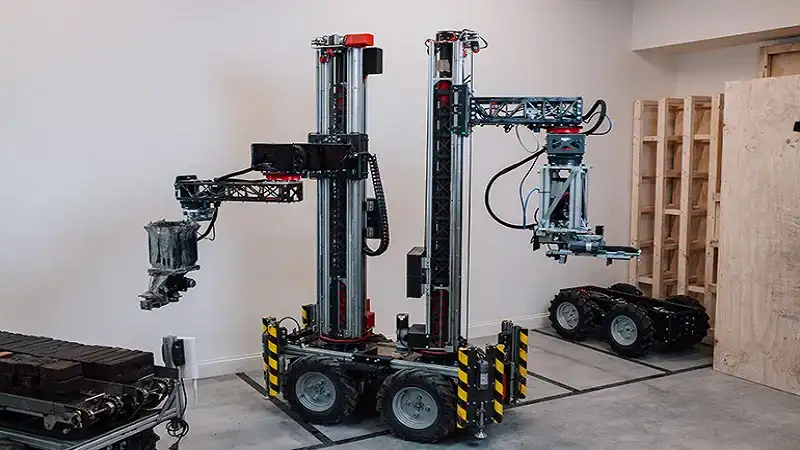In the ever-evolving landscape of cybersecurity threats, ransomware remains one of the most alarming. One particular variant that has made headlines recently is LockBit, known for its speed and efficiency. This article delves into the LockBit ransomware, its implications, and a specific incident involving Boeing and the so-called Lockbit 50gb Boeing Octoberlyons Hardcastle case.
What is LockBit Ransomware?
LockBit is a type of ransomware that encrypts files on a victim’s computer and demands a ransom for decryption. First discovered in 2019, it has rapidly evolved, with the latest version being LockBit 3.0, which was released in mid-2022. What sets LockBit apart is its ability to automate attacks, which makes it incredibly efficient.
LockBit uses a “ransomware-as-a-service” model, allowing affiliates to lease the software and launch their attacks while sharing the profits with the developers. This model has significantly lowered the entry barrier for cybercriminals, allowing even those with minimal technical knowledge to engage in ransomware attacks.
How LockBit Works
- Infection: LockBit typically spreads through phishing emails, exploiting vulnerabilities in software, or using remote desktop protocol (RDP) to gain access to a victim’s network.
- Encryption: Once inside, it encrypts files on the network, often focusing on high-value targets such as databases, documents, and images.
- Ransom Note: After encryption, a ransom note is left on the victim’s computer, demanding payment in cryptocurrency to receive the decryption key.
- Data Leak: In some cases, LockBit also threatens to leak sensitive data if the ransom is not paid, adding another layer of pressure on victims.
The Boeing Incident: Lockbit 50gb Boeing Octoberlyons Hardcastle
Boeing, the aerospace giant, found itself in the crosshairs of a LockBit attack that was dubbed the Lockbit 50gb Boeing Octoberlyons Hardcastle incident. This case is particularly notable due to Boeing’s critical role in global aviation and the sensitive nature of the data it handles.
Background
In October 2023, reports emerged that Boeing had suffered a significant data breach attributed to LockBit ransomware. Cybercriminals claimed to have stolen approximately 50 GB of sensitive data, including proprietary designs, engineering documents, and employee information. This incident raised alarms not only for Boeing but for the entire aerospace industry, highlighting vulnerabilities that could potentially compromise national security.
The Impact of the Attack
Operational Disruption
The immediate impact of the Lockbit 50gb Boeing Octoberlyons Hardcastle on Boeing was operational disruption. With critical systems locked, Boeing faced delays in production schedules and project timelines. The aerospace industry relies heavily on intricate supply chains, and disruptions can lead to cascading delays affecting not just Boeing but also its suppliers and partners.
Financial Implications
Ransomware attacks can be costly. In addition to the ransom itself, which in this case was reportedly several million dollars, there are also recovery costs, potential fines, and the long-term financial repercussions of lost business. For a company like Boeing, which operates on thin margins and faces fierce competition, the financial fallout can be devastating.
Reputational Damage
Boeing has faced its share of controversies over the years, and the LockBit attack added fuel to the fire. Trust is crucial in the aerospace industry, where safety and reliability are paramount. A significant data breach can lead to a loss of trust among clients, stakeholders, and the public.
The Response: Boeing’s Cybersecurity Measures
In response to the Lockbit 50gb Boeing Octoberlyons Hardcastle incident, Boeing implemented several measures to bolster its cybersecurity posture. These steps included:
- Enhanced Monitoring: Boeing ramped up its network monitoring efforts to detect any unusual activity early on.
- Employee Training: Recognizing that human error is often the weakest link in cybersecurity, Boeing initiated a comprehensive training program to educate employees about phishing and other social engineering tactics.
- Partnerships with Cybersecurity Firms: Boeing partnered with leading cybersecurity firms to conduct thorough assessments of its systems and enhance its defenses.
- Incident Response Plans: The company reviewed and updated its incident response plans to ensure that in the event of a future attack, the response would be swift and efficient.
Lessons Learned from the Lockbit 50gb Boeing Octoberlyons Hardcastle Incident
The Boeing incident serves as a stark reminder of the importance of cybersecurity in today’s digital age. Here are some key lessons that can be drawn from this situation:
1. Proactive Measures are Crucial
Waiting for an attack to happen before implementing cybersecurity measures is a recipe for disaster. Organizations should invest in robust security protocols, conduct regular audits, and stay informed about the latest threats.
2. Employee Awareness is Key
Human error is often the entry point for ransomware attacks. Training employees to recognize phishing attempts and suspicious activities can significantly reduce the risk of infection.
3. Incident Response Plans Must Be Tested
Having a plan is one thing; being prepared to execute it is another. Regular drills and simulations can help organizations ensure that they can respond effectively to a cybersecurity incident.
4. Collaboration is Essential
Cybersecurity is not a one-man job. Organizations should collaborate with cybersecurity experts, law enforcement, and other stakeholders to create a united front against cybercrime.
The Bigger Picture: The Rise of Ransomware
The Lockbit 50gb Boeing Octoberlyons Hardcastle is part of a larger trend of increasing ransomware attacks across various sectors, including healthcare, finance, and government. The rise of ransomware-as-a-service models has made it easier for cybercriminals to launch attacks, and the proliferation of remote work due to the COVID-19 pandemic has created new vulnerabilities.
Governmental Responses
Governments around the world are recognizing the growing threat of ransomware. Initiatives include:
- Regulatory Measures: Stricter regulations around data protection and cybersecurity are being implemented.
- Public Awareness Campaigns: Governments are investing in campaigns to educate businesses and individuals about the importance of cybersecurity.
- International Cooperation: Cybercrime knows no borders, and international cooperation is essential to tackle these threats effectively.
Future Outlook: What Lies Ahead?
As technology evolves, so do the tactics employed by cybercriminals. Lockbit 50gb Boeing Octoberlyons Hardcastlet and similar ransomware variants will continue to pose a significant threat. Here’s what we can expect in the coming years:
- Increased Sophistication: Ransomware attacks will become more sophisticated, with cybercriminals employing advanced techniques like artificial intelligence and machine learning to enhance their capabilities.
- Targeting Critical Infrastructure: As seen with the Boeing incident, critical infrastructure will continue to be a prime target for ransomware attacks, raising concerns about national security.
- Ransomware Legislation: Governments may introduce legislation aimed at curbing ransomware payments, making it more challenging for cybercriminals to profit from their activities.
- Focus on Cyber Insurance: Organizations may increasingly turn to cyber insurance as a way to mitigate financial losses from ransomware attacks. However, this may also lead to a complex landscape of coverage options and liabilities.
Conclusion
The Lockbit 50gb Boeing Octoberlyons Hardcastle ransomware attack on Boeing in October 2023 serves as a wake-up call for organizations worldwide. The incident underscores the necessity for robust cybersecurity measures, employee awareness, and a proactive approach to tackling cyber threats. As ransomware continues to evolve, organizations must stay vigilant and adapt to the changing landscape to protect their sensitive data and ensure operational continuity.
In a world increasingly reliant on technology, cybersecurity is not just an IT issue; it’s a fundamental aspect of doing business. The lessons learned from the Lockbit 50gb Boeing Octoberlyons Hardcastle incident can help shape a more secure future, protecting not just individual organizations but the broader community as well.




